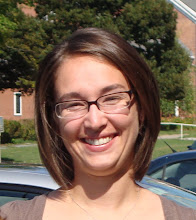Adding more individuals from populations that were already represented in the dataset, two more populations not previously represented and outgroup taxa did not resolve any of the paraphyletic problems. Two morphological species are reprsented in this treee'll call it the "T" group and the "B" group. Neither are monophyletic. There are two problem populations. The first is from the "T" group and is located in the Sierras. This could easily represent a cryptic species. This is the only population I was able to collect (despite widespread searching in the northern Sierras) in 2007. Therefore more collecting may provide additional resolution. Alternativley, there are approximately 90 basepair differences (out of 1424bp) between this population and the nearest relative which leads me to think of things such as pseudogenes. I'm investigating the pseudogene possiblilty by reexamining the chromatograms and translating the sequence to amino acids and looking for stop codons. None of these methods are foolproof, but when combined, may provide some indication of a pseudogene.
I still cannot get COII to amplify/properly sequence for the three individuals I have DNA for in the Sierra population. I get multiple bands and when using gel extraction techniques, do not get clean sequences. I'll try the entire process of amplification, gel extraction and sequencing again for these three individuals.
Monday, May 11, 2009
Saturday, May 2, 2009
Field Season Approaches
People are abuzz in the lab, getting ready for their various field projects and trips to meetings. The undergraduates are scarcely seen, likely preparing for their finals and summer work elsewhere. I myself am also frantic to get ready for the field season. In preparing for the field some serious decisions need to be made. To help me make those decisions I extracted DNA from more individuals from the populations that are causing the phylogeny to be rather paraphyletic at this point with regards to the two "species" I currently have samples for. One population is from California (Sierra Nevadas) and the other is from Idaho in Boise National Forest. Both wonderful places, but far from where my other collecting needs to take place. I would love to return to these places, but if more individuals added to the phylogeny brings more resolution and allows for monophyletic groups among the "species", then all will be well and I can concentrate on collecting in the east. If not, then I will have to try to get to at least one of these localities.
I've been working on scouting potential locations to travel to in the east. Among these are places really near our house. By being so close to these sites, hopefully I can collect some adults and rear them to get larvae to be able to describe the larvae of this genus, which has never been done. Matt and I went to Zurrick Bog to look for Neophylidorea. We came up empty handed, but found one adult Axymyia furcata flying around. Here are some photos of the pitcher plants and potential Neophylidorea habitat at Zurrick Bog.


I should get sequences back from these new individuals on Monday, align them and run some quick analyses to see whether a trip to the west is warrented. Stay tuned.
I've been working on scouting potential locations to travel to in the east. Among these are places really near our house. By being so close to these sites, hopefully I can collect some adults and rear them to get larvae to be able to describe the larvae of this genus, which has never been done. Matt and I went to Zurrick Bog to look for Neophylidorea. We came up empty handed, but found one adult Axymyia furcata flying around. Here are some photos of the pitcher plants and potential Neophylidorea habitat at Zurrick Bog.


I should get sequences back from these new individuals on Monday, align them and run some quick analyses to see whether a trip to the west is warrented. Stay tuned.
Subscribe to:
Posts (Atom)

